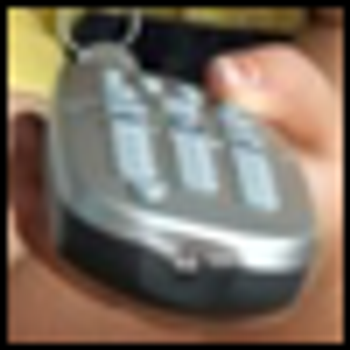
Is ADHD in a child foreshadowed by ADHD in other family members? Have acute-phase treatments for major depression been found to be effective in children and teens? These questions and more in this quiz.

Is ADHD in a child foreshadowed by ADHD in other family members? Have acute-phase treatments for major depression been found to be effective in children and teens? These questions and more in this quiz.

This table provides links to many valuable resources for child and adolescent psychiatry. A list of Web sites, books, organizations, and pivotal articles on ADHD and other topics.

In essence, screen media constitute neurologically potent, arousing input to the developing brain. Unlike conventional toxins, their effects are mediated by sense organs. However, they have demonstrable effects on brain activity, and on behavior and function.

Autism is demanding increased attention by professional and lay audiences; prevalence seems to be increasing. There are differing opinions about whether the increase is due to greater recognition and reporting, diagnostic expansion and substitution, or increasing acceptability.

This is both an exciting and challenging time to be a child and adolescent psychiatrist. New findings are changing our knowledge of childhood psychopathology. This Special Report discusses current developments in diagnosis, treatments, and problems for children and adolescents.

A 3-year study involving over 3,000 patients used motivational interviewing to counsel adolescents about staying away from potentially violent and alcohol-related situations. It was found that these brief sessions “reduced by half the chances that teenagers would experience peer violence or problems due to drinking.”

Avoiding Confidentiality Conflicts

The young adult years (18 to 29) are a critical time of transition, and they present unique challenges in regard to mental health issues and development. Until recently, most research has focused either on children and adolescents or adults. Grant and Potenza’s Young Adult Mental Health is a comprehensive text for clinicians and researchers who work with persons in the transitional period of young adulthood.

A pair of recent research articles has cast the public spotlight on treating schizophrenia in youths with antipsychotic medications.

The onset of psychiatric illness in a child is a life-changing event for families. Families from immigrant and ethnocultural communities often must come to an understanding of their child’s psychiatric difficulties while simultaneously interacting with an unfamiliar health care system and its practitioners.

Eating disorders are serious and potentially life-threatening, associated with severe food restriction, overexercise, malnutrition, and distorted thinking about body shape and weight or binge eating and purging behaviors.

The epidemiology and management of psychiatric disability have gained increased attention for a variety of reasons in the past 3 decades. There are issues of empowerment, advocacy, and reduction of stigma. There are also concerns about cost containment as well as reliability, validity, and efficacy of the determination process.

Autism spectrum disorders (ASDs) are a group of 5 neuro developmental conditions (autism, Asperger syndrome, pervasive developmental disorder not otherwise specified [PDD-NOS], Rett syndrome, and disintegrative childhood disorder).1 Once thought to be rare, the incidence of these disorders is now estimated to be 1 in 150 children in the general population.2 Furthermore, the number of recognized cases has increased markedly in recent years.

Over the past century, the syndrome currently referred to as ADHD has been conceptualized in relation to varying cognitive problems including attention, reward response, executive functioning, and other cognitive processes.

The words attributed to Socrates resonate with the perspectives of many contemporary parents and clinicians.1 The endurance of the concern suggests something fundamental about the psychopathology of deviant, disruptive behavior of youth. Yet clinicians struggle to understand its origins, to help parents control their children, and to help the children control themselves. Clinically, this manifests in failed pharmacological treatments, incompleted courses of individual therapy, problems in engaging families in treatment, and controversies over which therapy is most effective.

I am a fan of the television show Deadliest Catch-a documentary series that follows the travails of deep-sea fishermen in the Bering Sea. (Actually, it is mostly about deep crab fishing.) Living in Seattle, I have actually seen some of the boats filmed on the show.

When sexual abuse is alleged, children may face investigative interviews, family disruptions, a change in their school environment, mental health counseling, and even trial court testimony.

Youths aged 6 to 16 years with any subtype of ADHD participated in the study. Comorbid bipolar disorder, pervasive developmental disorder, psychotic illness, anxiety disorders, and tic disorders were exclusionary criteria. Patients with other comorbid psychiatric disorders, including major depressive disorder, were allowed to participate if ADHD was the primary diagnosis.

Medication adherence, especially in children and adolescents, is a complex problem that is poorly understood and underresearched, yet it is a clear barrier to effective treatment and is frequently encountered in everyday clinical practice.

Reducing complex human experiences into a psychiatric diagnosis can be a daunting task. For children with developmental disorders, this process is even more complicated and requires distilling often incomplete and frequently contradictory scientific evidence.

When most people think of bullying, they envision the schoolyard thug verbally or physically threatening hapless victims on the playground or on the school bus. The past few years, however, have witnessed a new type of bullying-cyber bullying-also known as electronic bullying or online social cruelty.

Adolescents who present with symptoms that suggest a psychotic disorder pose a number of diagnostic and treatment challenges. This article attempts to provide a practical guide to the assessment and management of adolescents with severe psychotic illness, including schizophrenia, schizophrenia-like disorders, and bipolar disorder.

In working with adolescents, mental health care professionals often draw on their own developmental experiences to help guide their patients; however, nonsuicidal self-injury (NSSI) is not likely to be a personal experience that psychiatrists can often draw on.

Psychiatry is changing so rapidly that it seems impossible to predict 1 year ahead, let alone 10 years. In 1967, when my psychiatry training ended, the community psychiatry movement had just begun, DSM-II was in the works, and the biological revolution was still around the corner.

Concern about the rising number of preschool-age children receiving atypical antipsychotics, α-agonists, or other psychotherapeutic medications recently motivated pediatric mental health professionals to develop best-practice algorithms for psycho-pharmacological treatment of young children. It also prompted some states and mental health providers to initiate medication monitoring and consultation programs.